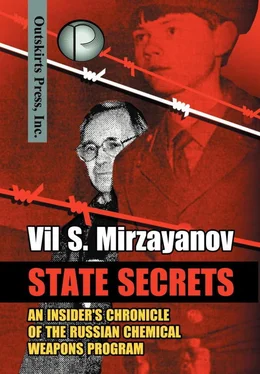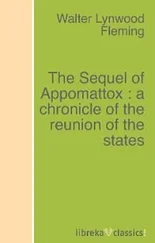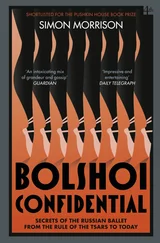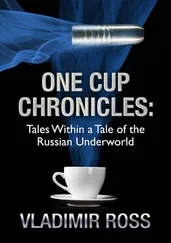Adolph Zaozerov did not put down roots as the new chief of Department “RP”. He was not able to adjust to relations with the military, and he understood very little about the direction which his department must be developed in. Having a handsome appearance and a wonderful vocal gift, he was still very far away from science. His success did not progress further than the reconstruction of his office into a luxury chamber.
In 1984, Zaozerov was replaced by Nikolai Kuznetsov, from the enterprise (NPO) “Basalt” – the leading contractor for scientific manufacturing. Basalt was the main designer in the U.S.S.R. of ammunition that contained chemical agents.
Kuznetsov was invited to work by the former director of GOSNIIOKhT, Patrushev and his deputy Guskov, who intended to give the department a more goal-oriented character. Also, it was nice to have someone who could promote the research of the institute directly to NPO “Basalt”, and have it realized.
The new director, Petrunin, quickly promoted him to his deputy. In 1991 he was sent by GOSNIIOKhT to the Volsk affiliate, to try to work on an old idea that Guskov’s collective had failed to accomplish in 1978. It became Kuznetsov’s contribution to successfully complete the testing of a binary weapon there. He understood that the previous failure with testing the binary variant on the idea of the reaction according to
O-i-C 4H 9
D
CH 3-P=O + HS-CH 2-CH 2-N(C 2H 5) 2’
\
CN
O-i-C 4H 9
/
CH 3-P=O
/
S-CH 2-CH 2-N(C 2H 5) 2
was due to the fact that they used an aviation bomb which was dropped from a low altitude. There was not enough time for the components of the binary weapon to mix thoroughly.
All that remained was to design a shell, or better yet a rocket, that intensified the mixing process. This is much easier to describe than to accomplish. But, thanks to their connections with military contractors, the Kuibyshevski Special Design Bureau had already completed all of this work by the end of 1990, and positive results followed.
Engineering a binary rocket is a delicate task. The burster charge used to break the barrier separating the two precursor chemicals has to be sufficient to initiate rapid mixing yet not destroy the precursor chemicals or disturb the ballistic trajectory of the rocket. Kuznetsov’s engineers worked to design this mini-reactor in flight, and it underwent preliminary testing at Basalt’s facilities in Samara (formerly known as Kuibyshev). A decision was taken to hold the tests at Nukus instead of Shikhany because prevailing opinion held that the US intelligence community did not know about the Nukus test site. The success of field tests of the Substance 33 binary rocket led the Soviet Army to adopt the first binary device as a chemical weapon in 1990.
The Soviet Army’s approval of the Substance 33 binary weapon triggered efforts to produce these weapons for the Soviet arsenal. Scaled-up studies and pilot plant production took place at Novocheboksary and probably also at Shikhany. In military circles, being able to produce a few grams of an agent was not significant. Waging war required tons of chemical agent, so figuring out how to produce large quantities of a specified agent was a crucial accomplishment. In the case of Substance 33, proving the ability to mass produce this new binary would qualify this agent’s developers to apply for the USSR’s highest awards.
As it turned out, this achievement merited the 1990 Lenin Prize, the Soviet equivalent of the Nobel Prize. Protocols for the Lenin Prize specified that it is awarded only for a great new development and that the Secretary General of the Communist Party approve of each one bestowed. [44] To qualify for this Lenin Prize, Petrunin and his cohorts had to have solid proof that they had designed, tested, certified, and begun mass production of the Substance 33 binary, complete with the signatures of the relevant factory managers. Otherwise, the application for the award would not meet the standard of being a great accomplishment worthy of the Lenin Prize. See also the comments of Vladimir Uglev in Oleg Vishnyakov’s article, “Interview with a Noose Around the Neck,” Novoe Vremya , No 6 (1993): 41-2.
Lenin Prizes are given out personally by the First Secretary of the Central Committee on April 21 st, the anniversary of Lenin’s birthday. In 1990, Soviet leader Mikhail Gorbachev, who in 1987 had told the international community that the Soviet Union was no longer making chemical weapons, [45] On 10 April 1987, Mikhail Gorbachev announced during a visit to Prague that the USSR was no longer making chemical weapons and had never deployed chemical weapons outside of its own territory. Jackson Diehl, “Gorbachev Proposes New Missile Talks; Short-Range Rockets Would Be Negotiated,” Washington Post , 10 April 1987, A1.
signed off on the Lenin Prize given to Petrunin and a host of generals for the Substance 33 binary. [46] In addition to V. Petrunin, the Lenin Prize was given to S.A. Arzhakov, A.V. Gaev, A.V. Kisletsov, A.D. Kuntsevich, S.V. Petrov, E.S. Severin, V.I. Sichevoi. It is not surprising that not one of these “laureates” really worked on this problem. Such was Soviet style of life.
According to tradition, GosNIIOKhT also hosted parties celebrating this achievement.
CHAPTER 9
Fight Without End and Evgeny Bogomazov’s “Discovery”
During my first years at GOSNIIOKhT, I wasn’t completely deprived of contact with my scientific colleagues on the outside, and it was even possible to participate in scientific conferences. I could still publish my articles in scientific journals, but only rarely and with great difficulty. Over the course of time, all of this was systematically blocked in such a way so that there was no longer any opportunity to contact the outside scientific world.
There was the Science Council at the institute, which regularly discussed the topics of both master’s and doctoral theses to be defended there. Soon this area became fully autonomous.
Before 1977, all theses defended at GOSNIIOKhT were sent to the Higher Attestation Commission (VAK) of the Government of the USSR for further approval, but after that an expert commission was created at the institute for considering all theses related to the ‘Foliant’ theme. This made the lives of the candidates for degrees much easier, but it also led to the isolation of all the scientists. The most important part was that it created the possibility to turn “useful” people into scientists, because the number of potential opponents and people making decisions was reduced. Mainly the fate of any thesis was determined in the court of public opinion, which was created by the board of directors and other bosses close to them.
Certainly I was not willing to give up my ambitions of a career as a scientist, and I tried my best to achieve that. The topic of my scientific research was related to the development of chromatographic methods for the determination of small concentrations of chemical agents and their precursors in different media. The methods I developed could be used both for chemical agents and for ordinary compounds. This comforted me to a great extent, because I could consider myself a researcher who was solving problems of general scientific importance. I was tormented by great doubts about the utility of all our work, after conversations with my friends Kostenko, Drozd, and other military specialists, so I tried to solve principle problems.
Prior to my research at GOSNIIOKhT and in the military-chemical complex in general, only the cholinesterase method was used for the determination of concentrations of phosphoorganic chemical agents (POCA). This method was based on using a biochemical substrate, extracted from horse’s blood. The horses they used for this were raised in special conditions, making sure that their feed was free of any traces of pesticides. This method was considered universal and was officially used to estimate concentrations of POCA everywhere throughout the military-chemical complex. Nevertheless, even though the method was very sensitive, it was not at all selective. The presence of many pesticides and other chemicals in the samples led to gross errors in the results of the analyses.
Читать дальше












